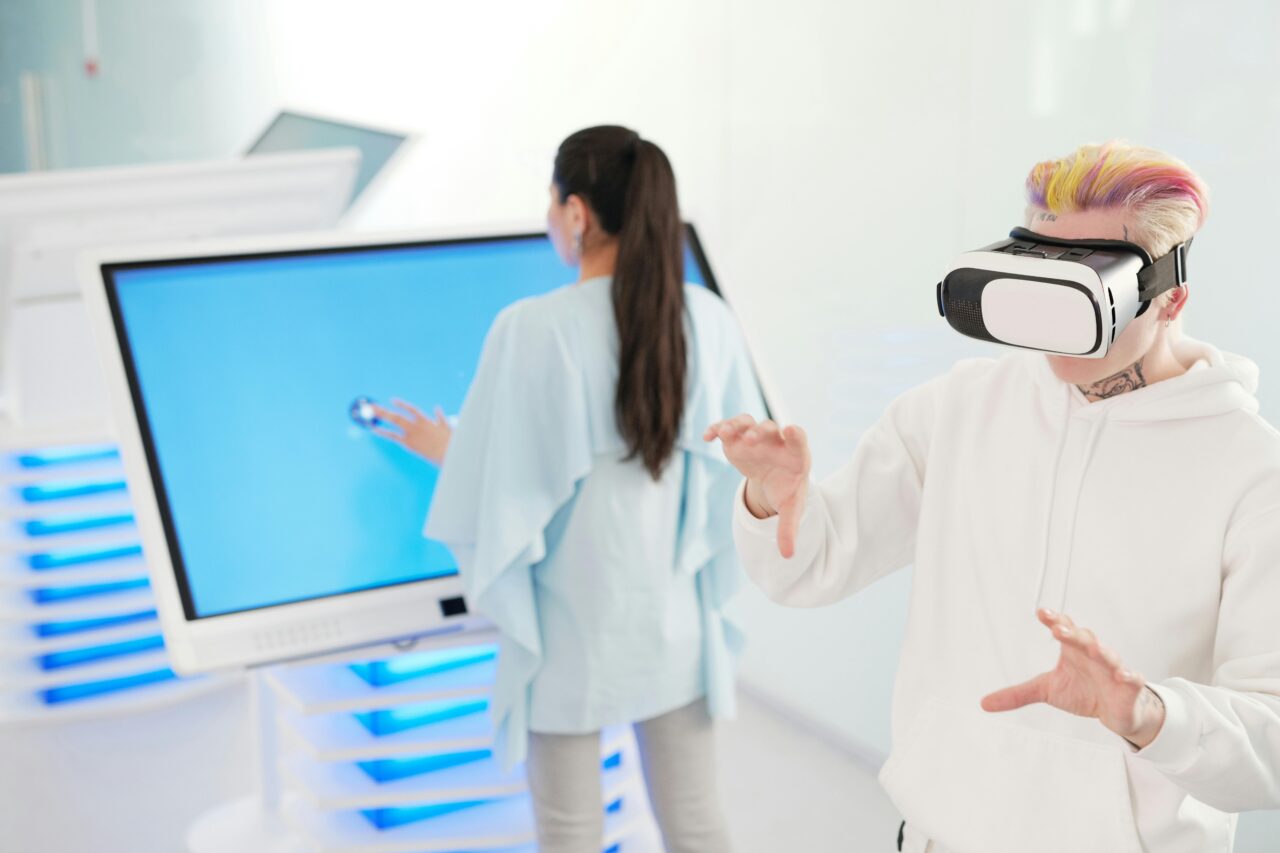
Why Virtual and Augmented Reality in Education Matters
Virtual and Augmented Reality in Education is revolutionizing the way students learn and interact with information. is revolutionizing the way students learn and interact with information. By integrating immersive technology, educators can create engaging and interactive learning experiences that enhance comprehension and retention. This article explores the benefits, applications, and future potential of these technologies in the education sector.
What is Virtual and Augmented Reality in Education?
Virtual Reality (VR) in Education
Virtual Reality (VR) creates a fully immersive digital environment that allows students to explore and interact with different concepts as if they were physically present. With the use of VR headsets, learners can visit historical landmarks, explore the human body, or conduct virtual science experiments in a risk-free setting.
Augmented Reality (AR) in Education
Augmented Reality (AR) overlays digital elements onto the real-world environment, enhancing traditional learning experiences. By using AR applications on smartphones or tablets, students can visualize complex concepts, interact with 3D models, and bring textbook content to life.
Benefits of Virtual and Augmented Reality in Education
1. Enhanced Engagement and Motivation
Interactive and immersive experiences keep students engaged and make learning more enjoyable.
2. Improved Retention and Understanding
Studies show that students retain information better when they actively participate in learning experiences rather than just reading or listening.
3. Hands-on Learning Without Risks
VR enables students to practice skills and conduct experiments in a simulated environment, reducing potential risks in real-life scenarios.
4. Accessibility and Inclusivity
These technologies can accommodate different learning styles and needs, making education more inclusive for students with disabilities.
5. Real-World Application and Career Preparation
AR and VR provide students with real-world simulations that help them develop practical skills relevant to their future careers.
Applications of Virtual and Augmented Reality in Education
1. Virtual Field Trips
Students can explore ancient civilizations, visit museums, or dive deep into the ocean without leaving the classroom.
2. Medical and Science Training
Medical students can practice surgical procedures through VR simulations, while science students can conduct virtual lab experiments.
3. Language Learning and Cultural Immersion
AR and VR allow students to practice new languages by interacting with native speakers in simulated environments.
4. Interactive STEM Learning
Augmented Reality helps students visualize complex mathematical and engineering concepts with interactive 3D models.
5. Special Education Support
Students with disabilities can benefit from customized VR and AR applications that cater to their specific learning needs.
The Future of Virtual and Augmented Reality in Education
As technology continues to evolve, Virtual and Augmented Reality in Education will become more widespread and sophisticated. The integration of artificial intelligence, personalized learning paths, and more affordable hardware will make these technologies more accessible to educational institutions worldwide.
The integration of immersive technologies in learning environments is transforming the learning experience, making it more engaging, interactive, and effective. As schools and universities continue to adopt these innovations, students will benefit from immersive and personalized learning experiences that prepare them for the future.
